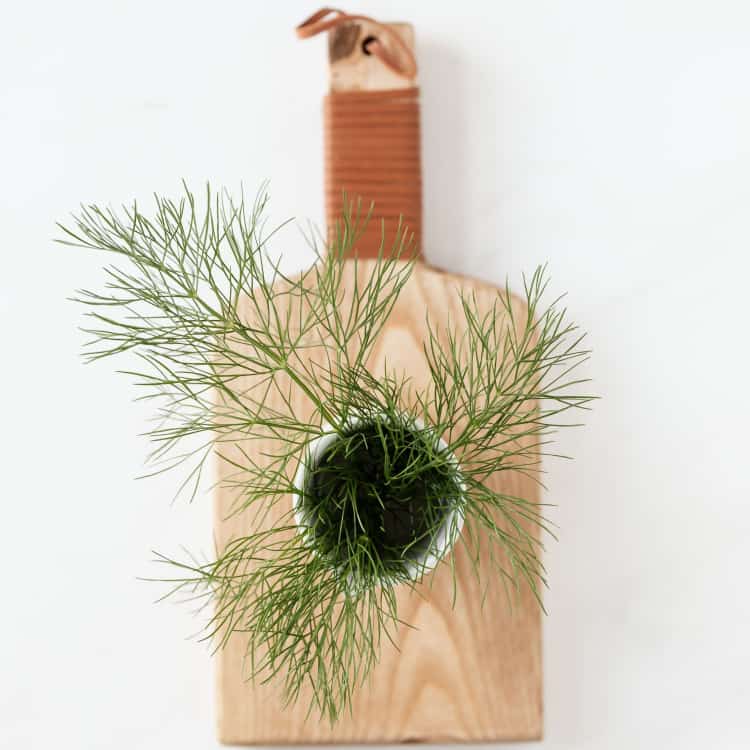Some secret coconut oil benefits
At gococonutoil.com, we explore different benefits of coconut oil and inspire people to use this generous gift from our mother nature. So what are those 10 coconut oil benefits that you may not know?
1. Sunscreen / Healing Burn
Coconut oil is not the most effective UV blocker, blocking only about 30% of UV rays from the sun. It compares favorably with sesame oil for UV blocking. As noted earlier in previous posts, it has the power to heal burns of the skin.
Sesame oil also has these characteristics, but it is a bit more difficult to get people to smear themselves in sesame oil. Perhaps it’s the smell, or the texture of the oil. In any event, these two oils and hempseed oil are all excellent choices for UV ray blocking in the 30% range, which correlates to an SPV of approximately 4.

More importantly, none of these oils block vitamin D absorption which most commercial sunscreens do. Vitamin D is essential to good health, and Vitamin D deficiency is being increasingly linked to many health crises, including heart disease and breast cancer. Vitamin D deficiencies have reached epidemic proportions in the United States.
If you are fair skinned, you may need to wear a layer of protective clothing to keep the sun off your skin in high summer, particularly between the hours of 10:00am and 2:00pm. But limited sun exposure with a healthy sunscreen like sesame or coconut oil allows you to absorb the crucial vitamin D your body needs and avoid the toxic chemicals in commercial sunscreen products, which can lead to multiple disorders including cancers of the skin.
It’s interesting that much of the literature on sun protection seems to find it unrealistic to expect people to wear a layer of clothing in summer to protect against excessive sun exposure. I have no idea why this is. Personally, I find a long sleeved lightweight cotton or linen shirt with a fine weave works excellently against sunburn. And white or light colors reflect the sun and keep me cooler as well. Loose fitting and breathable cotton allows the air to cool the skin and still keeps the sun off.
It’s usually too hot in the middle of the day to stand out in the sun anyway.
As someone who is an avid gardener and outdoor enthusiast, the best solution I’ve found is to get out into the sun early and late on those long summer days and find a cool shady spot to escape the glaringly bright and hot middle of the day.
If you do get a sunburn, remember to use Aloe vera gel (fresh from the plant is best) right away after a cooling shower, and later to apply coconut oil to help the skin heal from the burn. (See the section above on coconut oil’s ability to heal burns and wounds on the skin.)

I have also used coconut oil to heal burns from touching a hot pan or oven rack. First use ice, a frozen bag of peas or other small vegetables or a cold pack until the burn no longer re-heats and hurts when the cold is removed. Then slather with coconut oil. It really works and leaves no scarring either.
2. Cold Remedy
Increasing your intake of coconut oil and its powerful triglycerides is a sound method to combat infections and winter colds. Understanding the power of these natural fatty acid triglyceride defenders to attack, isolate and permeate the lipid coating of viruses makes it fairly simple to see why increasing our intake of coconut oil in diet and personal care routines makes good sense during cold and flu season.
For sore throats, you can make up a simple mix of lemon juice, coconut oil and honey to provide added defense to the mucus lining of the throat, provide relief from soreness and fight the infection.

Coconut Oil Sore Throat Relief
Ingredients
- Juice of half a lemon
- 2 to 3 Tbsp. of raw honey
- 2 Tbsp. of melted coconut oil
Mix well, and either take by the spoonful, sipping slowly and allowing it to coat your throat, or add to teas or other warm drinks. Do not overheat, as this will destroy the enzymes and healthy nutrition in the honey as well as reducing the effectiveness of the remedy.
Coconut Oil Vapor Rub
Ingredients
- ¾ cup (12 Tbsp.) coconut oil
- ⅓ cup (6 Tbsp.) organic bees wax
- 6 to 8 drops essential oils (peppermint, rosemary, frankincense or eucalyptus)
For remedy of bronchitis type congestion, consider any of the essential oils listed above, as well as cedar wood, pine needle, sweet marjoram and myrrh. Note: do not use eucalyptus oil on children under 1 year of age.
Directions: Heat a small saucepan with 2 inches of water to simmer on the stove. Turn off the stove and remove the pan from the heat. Place coconut oil and beeswax in a 1 quart mason jar, put a lid on the jar and place the jar in the hot water. Swirl occasionally to get the ingredients to move around to the edges of the jar and melt thoroughly. Add the essential oil(s). Pour off into small (4 to 6 ounce) wide-mouth mason jars and allow to cool completely, then cap.
Use this rub on the chest to break up congestion. You may also place a tiny dab under the nose to help clear breathing.
Simple Ways to Increase your Coconut Oil Consumption during Cold and Flu Season
To get more of coconut oil’s fatty acids into your system during cold and flu season, use coconut oil as a body rub, hand and face lotion, cook with it and add it to warm foods. We like to spread it on warm toast with a little nut butter or raw honey. You can also use it on pancakes and waffles – just a little bit goes a long way.
Melt a teaspoon of coconut oil into a warm broth or beverage, then spread it on a toast, tortillas or other foods. Or, simply use a tablespoon of the oil in your cooking. You can also apply the oil directly to nasal passages and anywhere on the skin to help your body ward off colds and infections.
Another way to introduce coconut oil, particularly if you are already coughing and feeling like you are ‘coming down with something’ is with the vapor rub method above.
Always consult your personal health care professional before applying home remedies, and of course remember that eucalyptus oil should not be used on children under one year of age, and should always be used very sparingly as it is extremely pungent and powerful.
3. Teeth and Oral Hygiene
Coconut oil has also been shown to be effective as a dentifrice. The same compounds in the fatty acids which break down viral infections and bacteria are now known to combine with certain naturally occurring enzymes in the human digestive tract and kill the bacteria which cause gum disease and plaque in the mouth.

But coconut oil is not the only helpful player for our oral hygiene. You can also use activated coconut charcoal to keep your teeth clean and healthy.
4. Hemorrhoids and Yeast Infections
Because it is so healing, it is also a great remedy for those sensitive areas that may need attention from time to time. Coconut oil will reduce the inflammation and swelling of hemorrhoids.
Use it to eliminate itching and inflammation from vaginal yeast infections to help heal faster and to kill the yeast that causes the infection.
Remember that coconut oil has been scientifically proven to penetrate and destroy the Candida albicans strains which cause these infections, so it’s a great way to stop the infection without introducing harsh chemicals or antibiotics to your system.
A simple way to do this is to coat a cotton tampon with coconut oil and insert it. Replace the tampon every few hours for the first 24 to 48 hours, or until the infection passes. Flush with a plain warm water douche after the treatment.
You can also make a coconut suppository by melting coconut oil and then chilling it in the bottom of a plastic bag in the fridge so that it is about a half inch wide strip of solid oil. Then just cut off one inch pieces to use as suppositories. These can also be used for hemorrhoid relief.
Around The House
5. Coconut Oil ‘Goo Gone’
There is a rather popular liquid cleaner called ‘Goo Gone’ that a good friend of ours used to use all the time. Goo Gone and Shoe Goo, I do believe, were her two favorite household remedies for removing gooey messes and fixing everything from shoes to floor tiles, broken off plastic hooks, you name it…
Well, coconut oil and baking soda make an all-natural ‘Goo Gone’ that works just as well but is all natural and contains two perfectly safe ingredients. Just mix a paste until you have a working blob about the size of the tip of your thumb (depending on the application needed!) and rub it into the gooey mess.
Keep rubbing and it will gently loosen and remove the goo without harming you or the surface that is gooey.
If using on finished wood, the oil may temporarily darken the wood, but wiping it with a clean cloth will remove the excess oil and it will gradually go back to its original color density. The fatty acids in the oil are just penetrating and treating the wood, which is actually good for it.
6. Furniture Oil
Coconut oil is great for furniture and wood finishes, but test for darkness before using (it can turn some pieces darker.) It is so stable that unlike other vegetable oils it doesn’t go rancid easily, and it penetrates deeply.
7. Cutting Boards
Coconut oil is a great conditioner for cutting boards for the same reasons it’s great as a furniture polish. It is stable and it penetrates well. Just rub a small amount into the wood and spread all over the board. We recently re-sanded our under-the-counter cutting board and used coconut oil on it. It really sealed it up nicely. Highly recommended.

8. Insect Repellent
Melt a cup of coconut oil and add about 30 drops of peppermint or lavender oil to make a natural insect repellant. Insects, like mosquitos and biting flies, don’t like these strong scents, which the plants use as a natural defense.
9. Pet Care
Add about a teaspoon of coconut oil to your dog or cat’s food each day to help them maintain a stable weight, fight infections and parasites and give them sleek glossy coats. It’s as good for them as it is for us. Many pets seem to know this, as most of the pets we know who are fed coconut oil seem to like it. Melting and drizzling it over their food is an easy way to give it to them.

10. Itchy Pets
We also rub coconut oil into our little dog’s back at the base of his tail where he gets dry itchy patches. He will try to scratch and bite the spot, but if we apply the coconut oil for a few days in a row he heals right up and stops scratching altogether. It’s also a great remedy for flea bites on pets.
Rub the affected area with coconut oil to relieve itching. Seems to work as they stop scratching. This is particularly effective for animals who are super sensitive to flea bites and get red itchy bumps wherever there is a bite.
Originally posted 2020-05-30 16:56:35.

